- Home
- Our Services
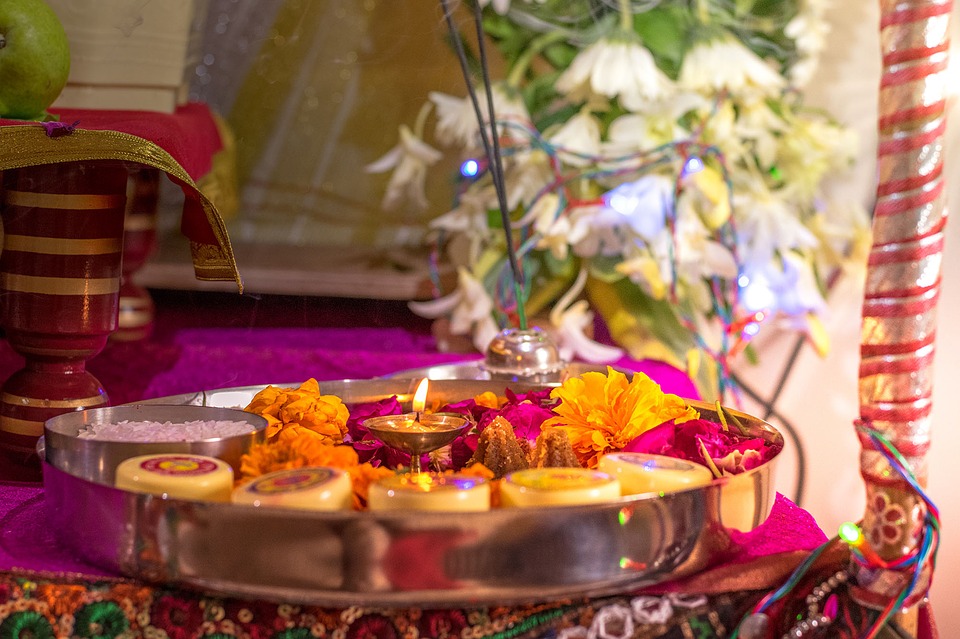
Archana
Puja or pooja (Sanskrit: पूजा, romanized: pūjā) is a worship ritual performed by Hindus, Buddhists and Jains to offer devotional homage and prayer to one or more deities, to host and honour a guest, or to spiritually celebrate an event. It may honour or celebrate the presence of special guests, or their memories after they die. The word pūjā is Sanskrit, and means reverence, honour, homage, adoration and worship. Puja, the loving offering of light, flowers, and water or food to the divine, is the essential ritual of Hinduism. For the worshipper, the divine is visible in the image, and the divinity sees the worshipper. The interaction between human and deity, between human and guru, is called darshan, seeing. (Source: Wikipedia)
Aksharabhyasam
Aksharaabhyasam or Akshara abhyaasam or Vidyaarambham or Akshara arambham is a traditional religious function in which the child is given initiation of education so that the child is ready to receive formal education. This ritual involves puja of Goddess Saraswati.
This ritual very common in Hindu families of Karnataka, Kerala, Tamil Nadu, Andhra Pradesh and Telangana. Akshara means ‘letters/alphabets’ and Abhyasam means ‘practice’. Together they mean “the study of practical letters”. The ceremony is performed by the Maternal Uncle (Mother’s brother)/ Father/ Paternal Uncle (Father’s brother) along with the family keeping the child in his lap holding the child’s right-hand forefinger and make the child write the Om followed by the panchaakshari mantra ‘Namah Shivayaah’. In Kerala Om Harisree Ganapathaye Namah mantra is used. (Source: Wikipedia)
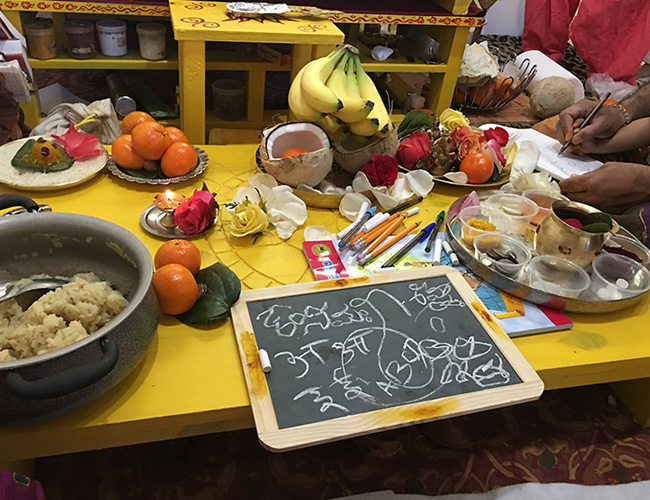
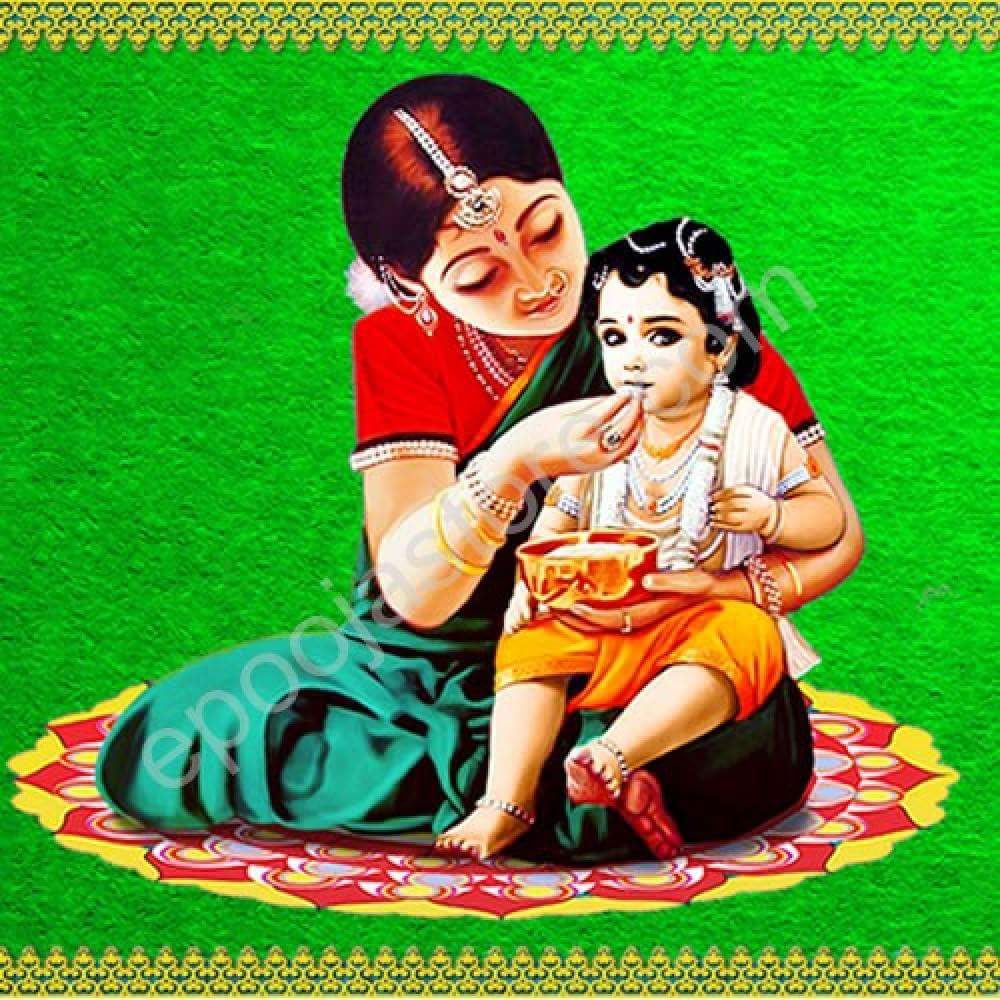
Annaprashanam
The Annaprashana (Sanskrit: अन्नप्राशन, Annaprāśana, Bengali: অন্নপ্রাশন, Odia: ଅନ୍ନପ୍ରାଶନ) also known as Annaprashana vidhi, Annaprasan or Anna-prasanam, is a Hindu rite of passage (Saṃskāra) that marks an infant’s first intake of food other than milk. The term annaprashana means “eating of cooked food”. In Vedic Hindu culture the child cannot eat rice until Annaprashana has occurred. Importance is given to rice because of its symbolism as a life-sustaining food and a sacred food in the form of kheer. The Annaprashana remains an important milestone and the ceremony is celebrated in Nepal and India. It is also known as MukheBhat in West Bengal, Choroonu in Kerala, and Bhath Khulai in Himachal Pradesh. [3] In Nepal, it is also called Pasni. (Source: Wikipedia)
Ayushya Homam
Ayush means age or lifespan in Sanskrit. Ayushya homam is the worship of Ayur Devatha (God of life). By performing this ayush homam, one is blessed with good health and long life. Ayush homam is performed by priests/purohits for removal of hindrances from life. This is performed usually on the naming ceremony of a newly born baby, wishing for his/her wellness and having a happy life forever. It is believed that by doing this homam forever blessings from the god of life is attained. Ayushya homam is also performed in homes or at temples, when a person has come out from a terminal illness and is wishing for a healthy life here after. It is done specially on your Janma Nakshatram (Birth Star) or Birthday to earn the benevolence of god seeking longevity, health, recovery from ailments, relief from mental trauma & attain success in material and spiritual level. (Source: Wikipedia)
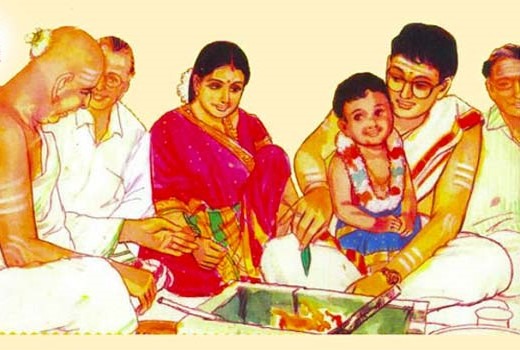
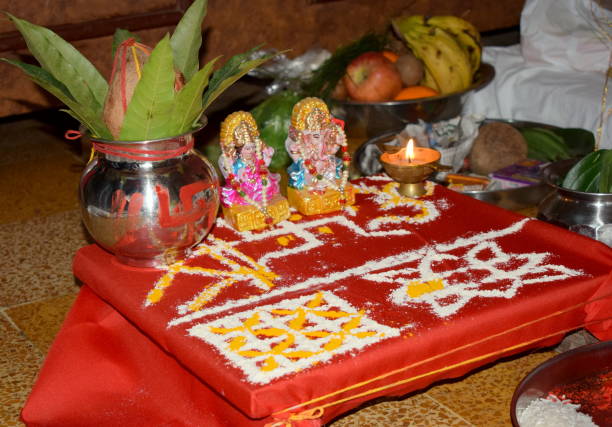
Lakshmi Puja
Lakshmi Pooja (Sanskrit: लक्ष्मी पूजा, romanized: Lakṣmī Pūjā), is a Hindu religious festival that falls on Amavasya (new moon day) in the Vikram Samvat Hindu calendar month of Kartik, on the third day of Deepawali and is considered as the main festive day of Deepawali, however in Assam this puja is celebrated 5 days after Vijaya Dashami.
According to legend, Lakshmi, the goddess of wealth, prosperity, auspiciousness, and good fortune, and Lord Vishnu’s wife, visits her devotees and bestows gifts and blessings upon each of them. To welcome the Goddess, devotees clean their houses, decorate them with finery and lights, and prepare sweet treats and delicacies as offerings. Devotees believe the happier Lakshmi is with the visit, the more she blesses the family with health and wealth. (Source: Wikipedia)
Vivah, Kalyanam
A Hindu wedding, also known as Vivaha (Sanskrit: विवाह; or Vivaaha), Lagna (लग्न), or Kalyanam (कल्याणम्), is the traditional wedding ceremony for Hindus. The wedding ceremonies are very colourful, and celebrations may extend for several days. The bride’s and groom’s home—entrance, doors, wall, floor, roof—are sometimes decorated with colors, flowers, and other decorations.
The word vivāha originated as a sacred union of people as per Vedic traditions, i.e. what many call marriage, but based on cosmic laws and advanced ancient practices. Under Vedic Hindu traditions, marriage is viewed as one of the sasskāras, which are lifelong commitments of one wife and one husband. In India, marriage has been looked upon as having been designed by the cosmos and considered as a “sacred oneness witnessed by fire itself.” The rituals and processes of a Hindu wedding vary widely, by region and community. Nevertheless, the Hindu wedding ceremony at its core is essentially a Vedic yajna ritual and three key rituals are almost universal. (Source: Wikipedia)

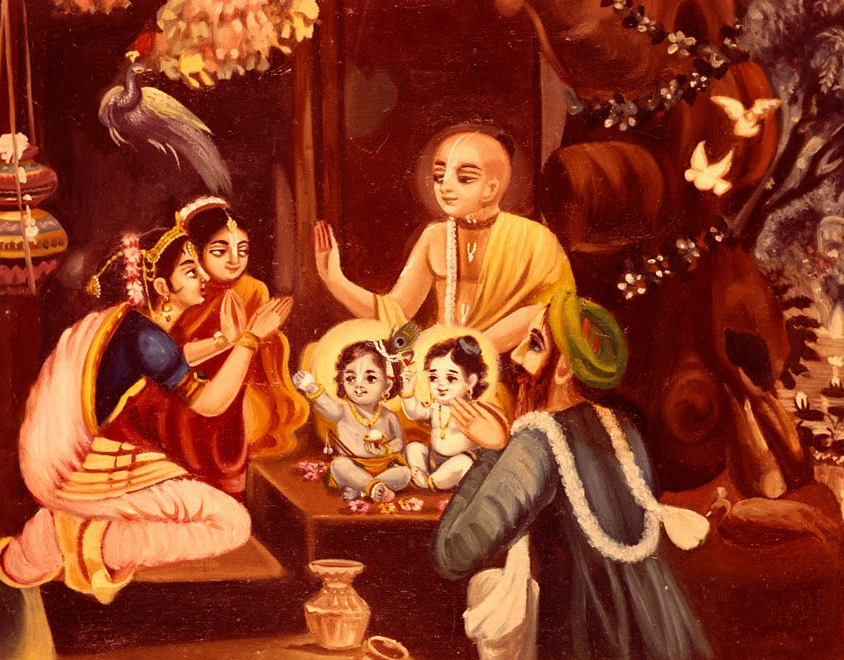
Namakaranam
Namakarana (Sanskrit: नामकरण, Nāmakaraṇa) (literally, naming) is the naming ceremony in Hinduism and a Sanskara (rite of passage) to name a baby. According to the Grhya Sutras, Namakarana ceremony is typically performed on the tenth or the twelfth day after birth. Some texts suggest the naming ceremony be done on the first new moon or full moon day after the 10th day of birth. Alternate opinions range from the tenth day to the first day of the second year.
On the day of this samskara, the infant is bathed and dressed in new garments. Their formal name, selected by the parents, is announced. The naming ritual solemnizes the child as an individual, marking the process by which a child is accepted and socialized by people around them. The rite of passage also includes a gathering of friends and relatives of the baby’s parents, typically with gifts and for a feast. (Source: Wikipedia)
Satyanarayan Puja
The Satyanarayanã Puja is a religious ritual worship of the Hindu god Vishnu. The puja is described in the Skanda Purana, a medieval era Sanskrit text. According to Madhuri Yadlapati, the Satyanarayana Puja is an archetypal example of how “the Hindu puja facilitates the intimacy of devotional worship while enabling a humble sense of participating gratefully in a larger sacred world”.
The puja narrates the Satyanarayana Katha, which dictates the various worldly and spiritual benefits the puja brings to performers. The Katha states how the deity Narayana vows to aid his devotees during Kali Yuga, the last of the four ages in Hindu cosmology, in particular the performers and attendees of the Satyanarayana Puja. (Source: Wikipedia)
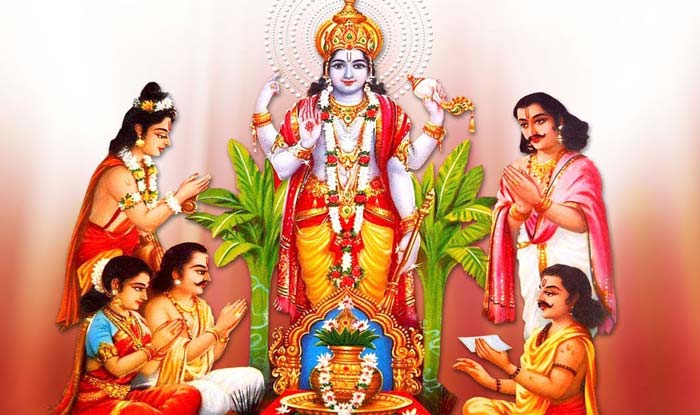
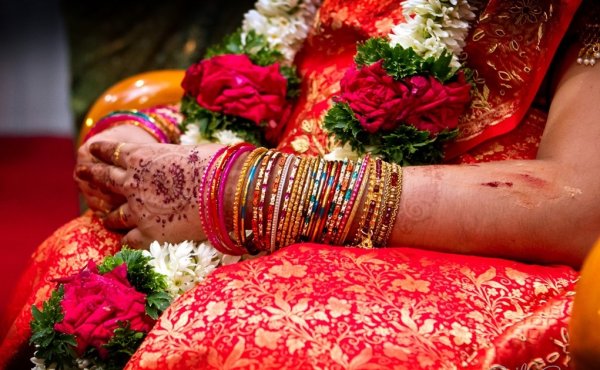
Seemantham
Seemantham/Seemantha or Pumsavana Seemantham, also known as Valaikaappu, is an Indian tradition popular in the South Indian states of Tamil Nadu, Telangana, Karnataka, Kerala and Aandhrapradesh, carried out during the 6th, 7th or 8th month of a pregnancy. The word “Seemantham/Seemantha” refers to parting the hair just above the eyebrow where the Goddess of Wealth, Sri Mahalakshmi, resides. This leads to the practice of applying kumkum to the parting in order to propitiate the Goddess Sri Lakshmi such that when a woman delivers a child, she is considered to be an embodiment of the Goddess Lakshmi herself. (Source: Wikipedia)
From the day of formation in its mother’s womb and the unborn child can record sounds and vibrations from its surroundings.
Upanayanam
LUpanayana (Sanskrit: उपनयन upanayana), also known as janai or janea, poita/paita, Yagnopavita, Bratabandha,Bratopanayan is one of the traditional saṃskāras (rites of passage) that marked the acceptance of a student by a guru (teacher or tutor) and an individual’s initiation into a school in Hinduism. The tradition is widely discussed in ancient Sanskrit texts of Hinduism and varies regionally. The sacred thread (yagnyopavita, janeu, or poonal) is received by the boy during this ceremony, which he continues wearing from the left shoulder to the right crossing the chest thereafter.
Upanayana literally means “the act of leading to or enlightment or near the eye”. It is an important and widely discussed samskara in ancient Sanskrit texts. The rite of passage symbolizes the leading or drawing towards the self of a child, in a school, by a teacher. It is a ceremony in which a guru (teacher) accepts and draws a child towards knowledge and initiates the second birth that is of the young mind and spirit. Vedic period texts such as the Baudhāyana Grihyasutra encouraged the three Varnas of society to undergo the Upanayana, viz., the Brahmins, the Kshatriyas and the Vaishyas. In the 21st century, however, it is performed almost exclusively by the Brahmin community. (Source: Indianauto)
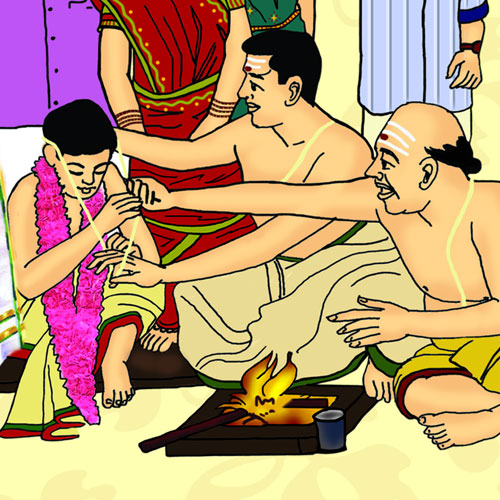
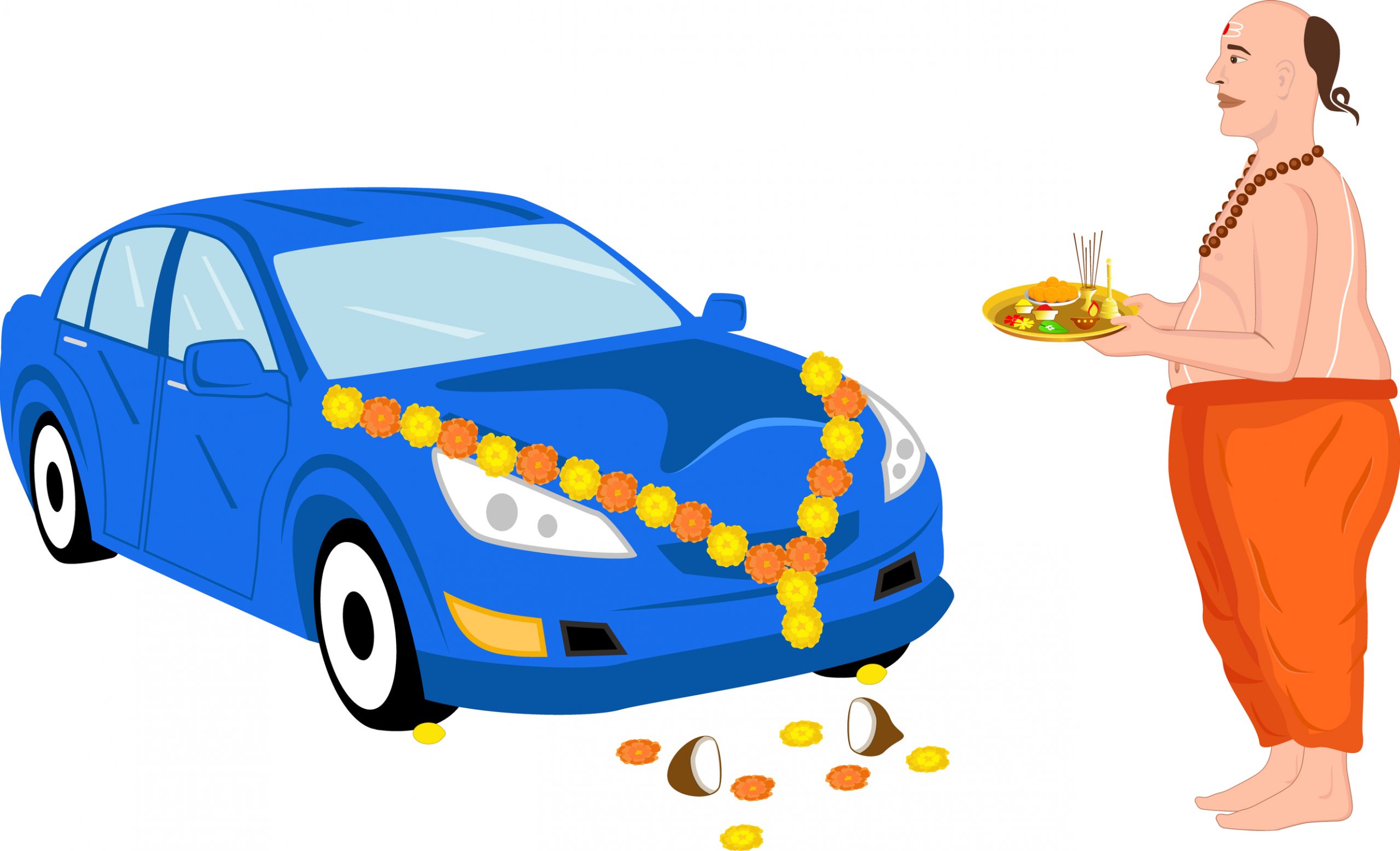
Vahana Pooja
In Hindu culture, there is an old tradition to pray for all new items before they are used. For vehicles, it is called Vaahan Pooja, in which the owner will pray for a new car to help it become harmonious to the house and avoid any bad lucks in the future. This tradition is of great importance since it will show gratitude to the god, help protect the car and the driver from misfortunes and accidents. New car Pooja can be done at home whenever a new car is purchased. This ritual can also be conducted on special occasions or festivals such as Bhai-Dooj, Ganesh Chaturthi, Gudi Padwa, Akshaya Tritiya, Dhanteras and Navratri. (Source: Wikipedia)
